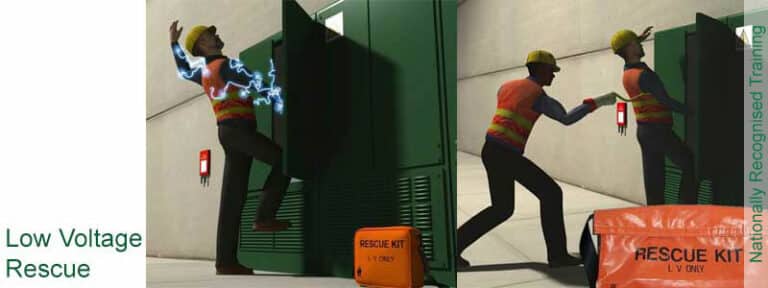Introduction
In today's busy work environment, ensuring the safety and well-being of workers is vital. Among the critical aspects of work environment safety and security is the provision of Automated External Defibrillators (AEDs). These lifesaving devices are crucial for reacting to abrupt cardiac arrests, which can happen in any setup, including work environments. This comprehensive guide will explore the Workplace AED Requirements in Australia, highlighting what every company needs to know about executing and maintaining AEDs.
Workplace AED Requirements in Australia: What Every Employer Demands to Know
Understanding cpr.com.au the legal and practical demands surrounding AEDs is essential for all employers in Australia. The Australian Resuscitation Council highlights that having an AED on-site can substantially increase survival rates during cardiac emergencies. Companies must acquaint themselves with their duties under appropriate regulation, including the Work Health and Safety Act 2011.
The Value of Having an AED in Your Workplace
Every child care first aid adelaide second counts when it pertains to a cardiac emergency situation. An AED can be the distinction between life and fatality. According to research studies, very early defibrillation enhances survival rates by up to 70%. This highlights why it's not just a great concept-- it's a necessity.
Understanding Automated External Defibrillator Clarified Australia
An Automated External Defibrillator (AED) is a portable device that examines heart rhythm and can send out an electrical shock to the heart if needed. The gadget overviews individuals through the process with voice motivates and aesthetic guidelines, making it usable even for individuals without any medical training.
How to Make use of an AED Step by Step Australia
Using an AED involves several essential actions:
Assess Responsiveness: Check if the person is responsive. Call for Help: Dial emergency services immediately. Retrieve the AED: Obtain the local AED. Attach Pads: Comply with diagrams on pads for right placement. Analyze Heart Rhythm: The device will certainly examine whether a shock is needed. Deliver Shock if Necessary: Ensure nobody is touching the individual before pressing the shock button. Continue CPR: After supplying a shock, continue mouth-to-mouth resuscitation up until emergency services arrive.AED and mouth-to-mouth resuscitation With each other Australia
Combining mouth-to-mouth resuscitation with an AED enhances survival opportunities substantially. While awaiting an ambulance, performing mouth-to-mouth resuscitation maintains blood flowing, raising oxygen supply to vital organs up until defibrillation can occur.
AED Usage on Children Australia
When utilizing an AED on kids, unique pediatric pads are normally needed. Several modern devices come equipped with child-specific setups that change power levels based upon age or weight criteria.
AED Battery Maintenance Australia
Maintaining your AED consists of inspecting battery standing regularly, replacing batteries according to maker guidelines, and making certain pads are not expired or damaged.
Workplace AED Needs Australia
Employers should make certain that:
- An ideal number of AEDs are available based on work environment size and location. Employees have accessibility to training for utilizing the device. Regular maintenance checks are carried out according to supplier recommendations.
Public AED Locations Australia
Many public areas currently include easily accessible AEDs; understanding where these locations are can conserve lives beyond work environment settings also. Local councils often keep databases of these locations.
Defibrillator Training Courses Australia
Training programs give important understanding about making use of defibrillators efficiently alongside mouth-to-mouth resuscitation techniques. Organizations like St John Rescue offer certifications that gear up workers with lifesaving skills.
Defibrillator Regulations Australia
Legislation surrounding defibrillators varies by state but generally mandates specific work environments, such as gyms or aged treatment centers, to have AEDs easily available for use throughout emergencies.
Choosing Right AED Australia
Selecting an ideal model relies on elements such as:
- Intended use (office vs industrial) User-friendliness Availability of pediatric options
Identifying Prospective Disasters in Your Workplace
Employers need to perform danger evaluations routinely to recognize prospective medical emergencies distinct to their atmosphere-- this may include assessing staff member health threats or ecological risks affecting emergency feedback protocols.
FAQs
1. What is an Automated Exterior Defibrillator?
An Automated External Defibrillator (AED) is a mobile gadget created to deal with people experiencing unexpected cardiac arrest by providing an electrical shock that helps restore typical heart rhythm.
2. Are there legal demands for having an AED in my workplace?
Yes, while certain regulation might differ by state or area, numerous areas call for workplaces-- specifically those taken into consideration risky-- to have accessibility to automated external defibrillators as part of their emergency treatment provisions.
3. Just how typically ought to I inspect my office's AED?
It's recommended to examine your work environment's AED a minimum of as soon as a month and after each use, making sure that batteries are practical and pads are within expiration dates.
4. Can any individual utilize an AED?
Yes! Modern tools are made for laypeople and supply detailed audio directions; however, formal training is recommended for ideal preparedness throughout emergencies.



5. What is consisted of in defibrillator training courses?
Courses commonly cover exactly how to operate an AED safely, execute mouth-to-mouth resuscitation effectively, identify indications of cardiac arrest, and react properly during clinical emergencies.
6. Where can I find public gain access to defibrillators?
Public access defibrillators can be located in different areas such as shopping mall, flight terminals, colleges, showing off places, and community centers; regional authorities frequently keep maps revealing these locations.
Conclusion
Ensuring office safety and security includes greater than simply conformity; it's about cultivating a culture of readiness amongst staff members worrying wellness emergencies such as heart attacks. Implementing effective policies around Automated External Defibrillators (AEDs) not just improves your express childcare first aid - CPR First Aid Professionals task of treatment however likewise shows commitment towards employee welfare-- a win-win situation!
In recap, comprehending the necessary elements bordering workplace AED demands in Australia furnishes employers with expertise necessary for producing more secure settings conducive to both productivity and well-being among team member-- because at the end of the day? Everyone should have satisfaction knowing they're made sure of!